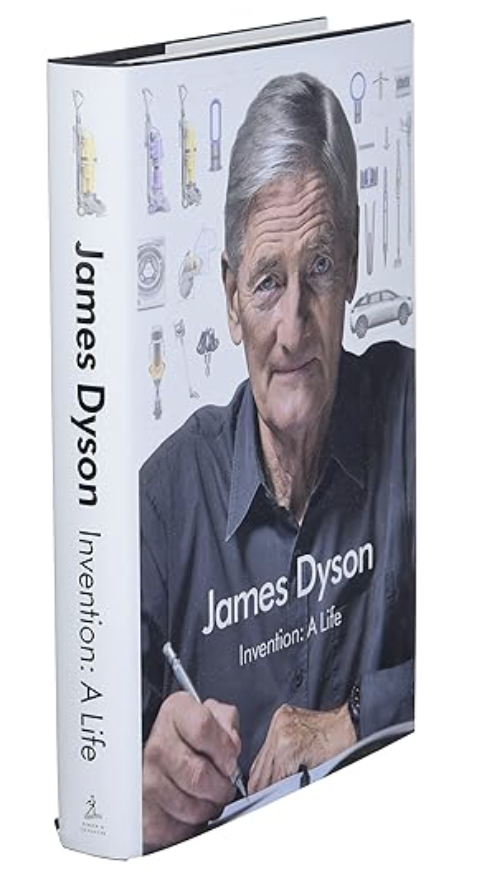James Dyson The Invention
That Spread Like Wildfire
James Dyson: The Engineer’s Pursuit
It was the year 1978, and James Dyson had hit rock bottom. Or so it seemed to everyone around him.
His ambition of creating a bagless vacuum cleaner was nothing but a pipe dream, they said. Friends and colleagues had long given up on the idea, advising him to move on, to find another project.
But Dyson was not one to be easily swayed. His unwavering determination was both his greatest asset and his most feared liability.
Dyson's small workshop in the English countryside was cluttered with prototypes, each representing a failed attempt. Yet, among the chaos, there was a sense of order—an underlying conviction that he was on the brink of something revolutionary.
Each morning, Dyson would rise before dawn, driven by an insatiable curiosity and a relentless pursuit of perfection.
One cold, misty morning, Dyson stood in his workshop, staring at his latest creation.
It was his 1,127th prototype, and it looked promising.
His fingers traced the sleek lines of the machine as he contemplated the design. The key to his invention lay in the cyclone technology he had been obsessively perfecting—a system that used centrifugal force to separate dust from air without the need for a bag.
He switched on the machine, holding his breath as the vacuum roared to life. For a few fleeting moments, it worked flawlessly, sucking up dust and debris with unprecedented efficiency. But then, it sputtered and died.
Frustration threatened to overwhelm him, but James Dyson refused to give in. Instead, he dissected the machine, determined to find the flaw and fix it.
Days turned into weeks, and weeks into months.
Dyson's persistence was unwavering, even as his finances dwindled. He sold off his possessions, one by one, to fund his experiments. His friends whispered behind his back, calling him obsessed, delusional.
But Dyson remained undeterred.
One evening, as the sun dipped below the horizon, casting long shadows across his workshop, Dyson had a breakthrough.
The solution had been staring him in the face all along—a minor adjustment to the airflow design. He worked through the night, fueled by adrenaline and anticipation.
By dawn, the new prototype was ready.
Dyson switched it on, his heart pounding in his chest. The machine roared to life, and this time, it worked perfectly. The cyclone technology separated the dust with impeccable precision, and the vacuum didn't lose suction. Dyson had finally done it.
News of Dyson's invention spread like wildfire.
Investors who had once dismissed him came flocking, eager to be part of the revolution. Dyson's vacuum cleaner hit the market and was met with resounding success. His company grew, and soon, the name Dyson became synonymous with innovation and engineering excellence.
But the journey was far from over. Dyson's mind was always racing, always looking for the next challenge. His workshop continued to hum with activity as he turned his attention to new projects—hand dryers, bladeless fans, and more. Each new invention bore the hallmark of his relentless pursuit of perfection.
Years later, as Dyson stood on the stage, accepting yet another award for his contributions to engineering, he reflected on his journey. The countless failures, the sleepless nights, the doubters—they had all been part of the process. His success was not born of a single moment, but of a lifetime of perseverance and innovation.
In the audience, young engineers and inventors looked up at Dyson with admiration and hope. He had become a beacon of inspiration, a testament to the power of determination and the boundless possibilities of the human mind.
And so, the James Dyson story continued...
And so, James Dyson's story continued, not as a tale of overnight success, but as a testament to the enduring spirit of innovation.
His journey was a reminder that true greatness lies not in the destination, but in the relentless pursuit of one's dreams.
He established the James Dyson Foundation in 2002, to challenge misconceptions about engineering and inspire more young people to pursue careers in engineering and science, it runs the annual global
James Dyson Award to celebrate and support young problem-solving inventors in sustainability
and medical fields.
In 2017, Dyson founded the Dyson Institute of Engineering and Technology, based on the Dyson Campus in Malmesbury. It is a new form of degree, in which school leavers study while undertaking a full-time salaried role in Dyson’s engineering team. The first cohort graduated in 2021 and all elected to remain at Dyson.
James was awarded a CBE in 1996 and a Knight Bachelor in 2007. He was elected a Fellow of the Royal Society in 2015, and in the 2016 New Year Honours was appointed to the Order of Merit – the highest honour and the only one within the Queen’s personal gift.

